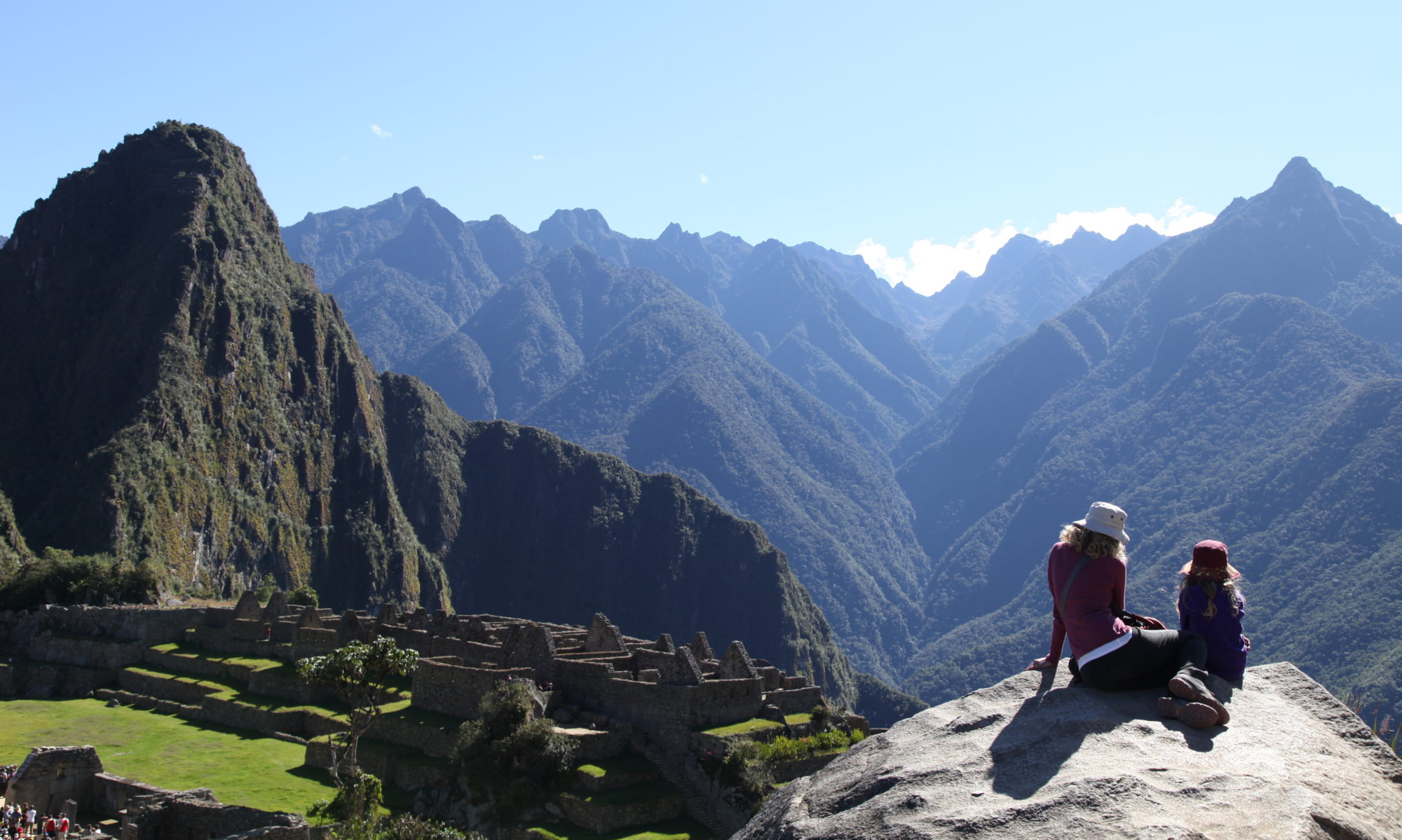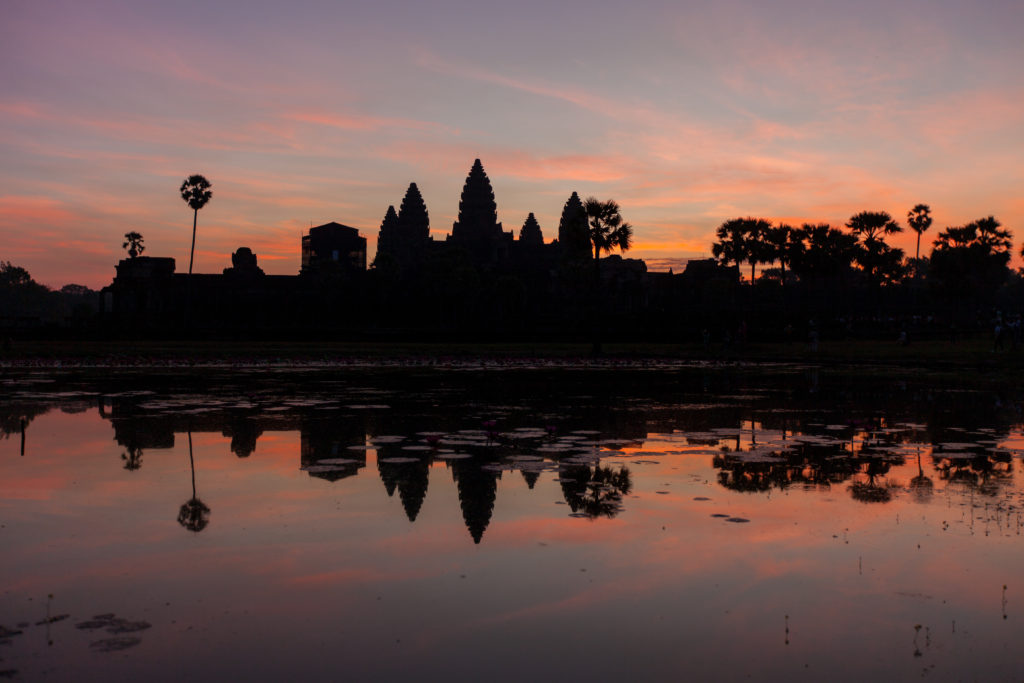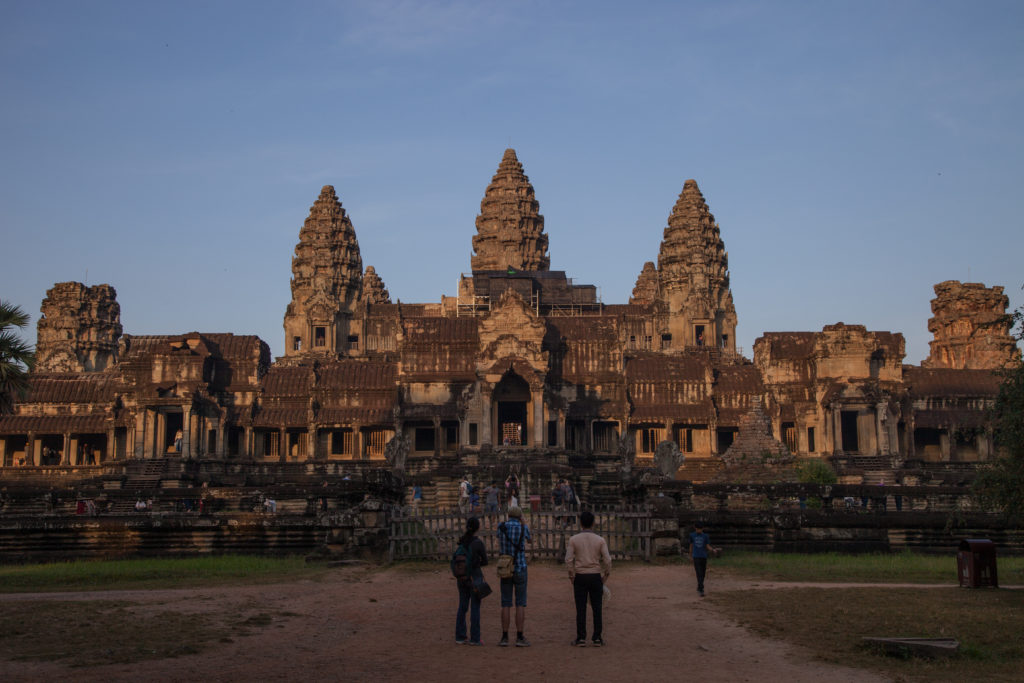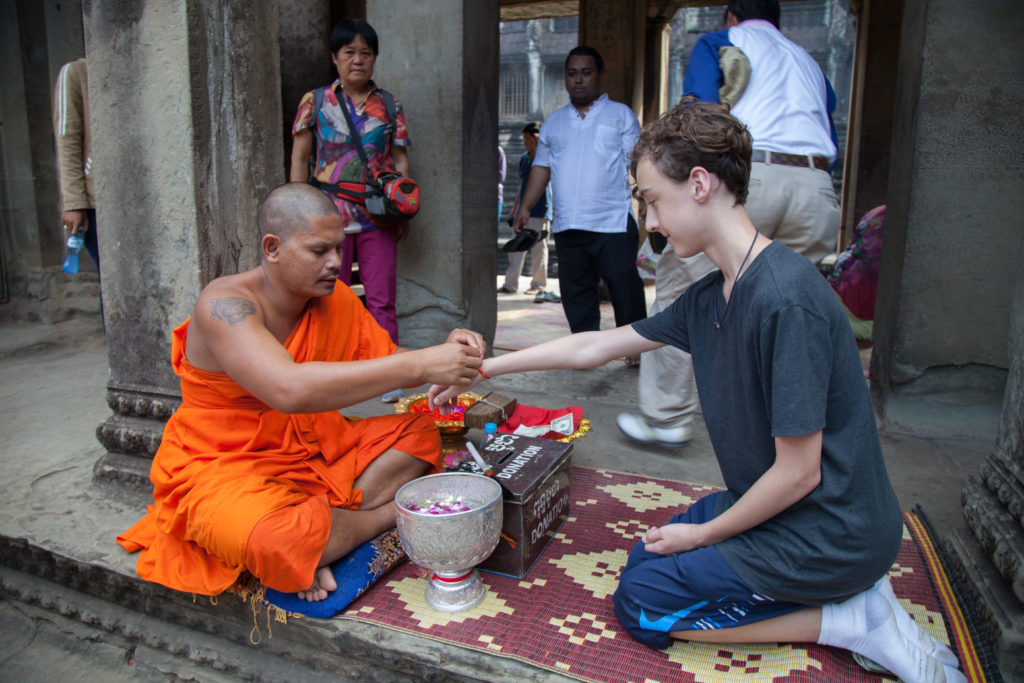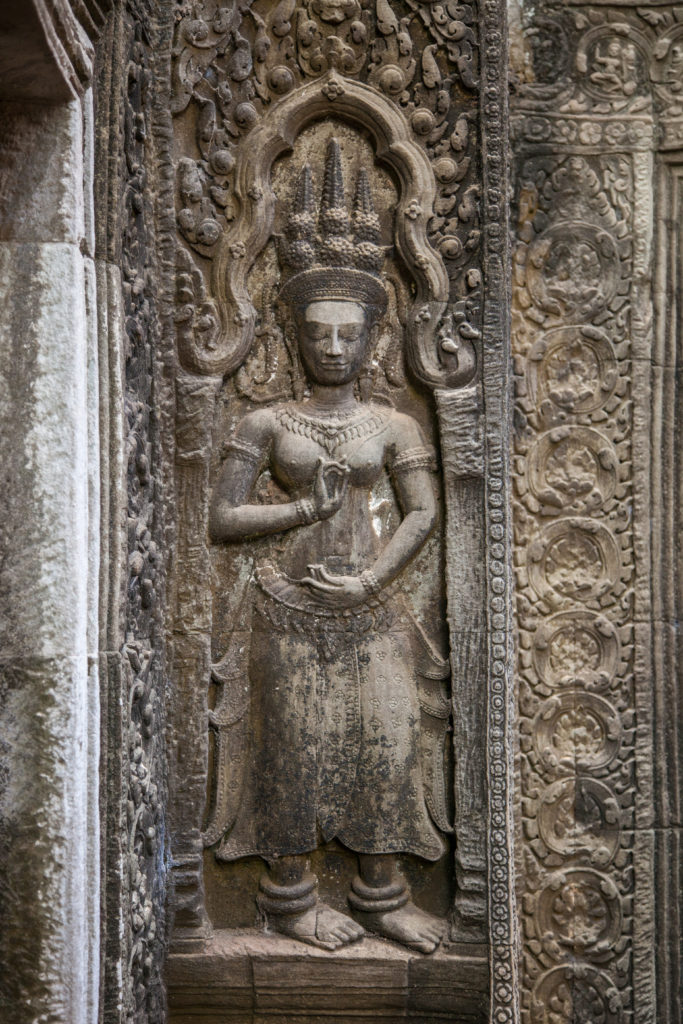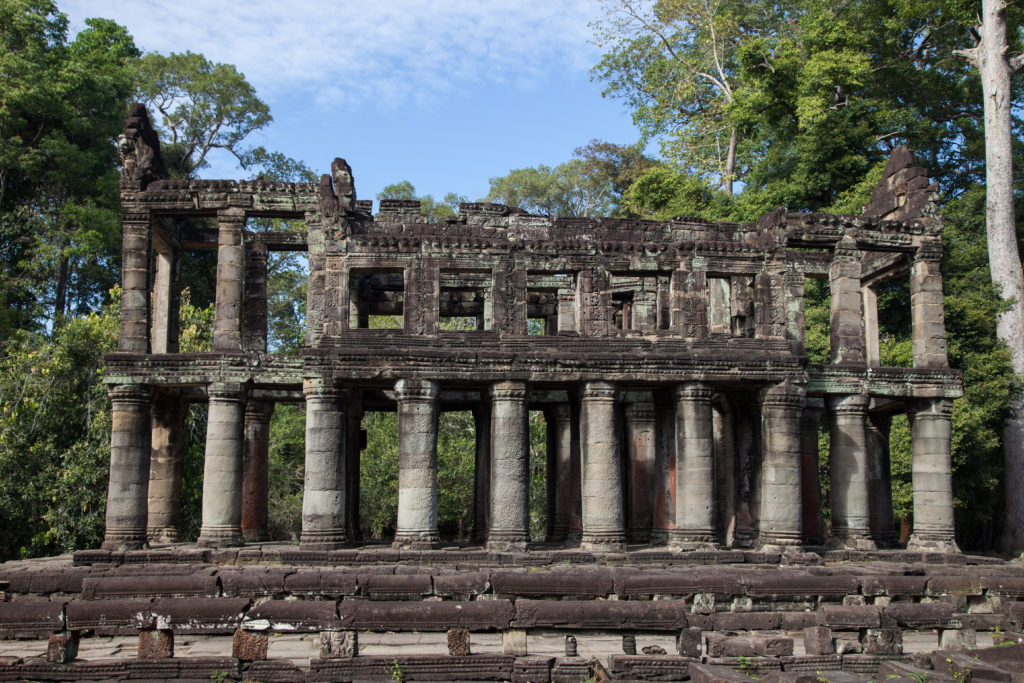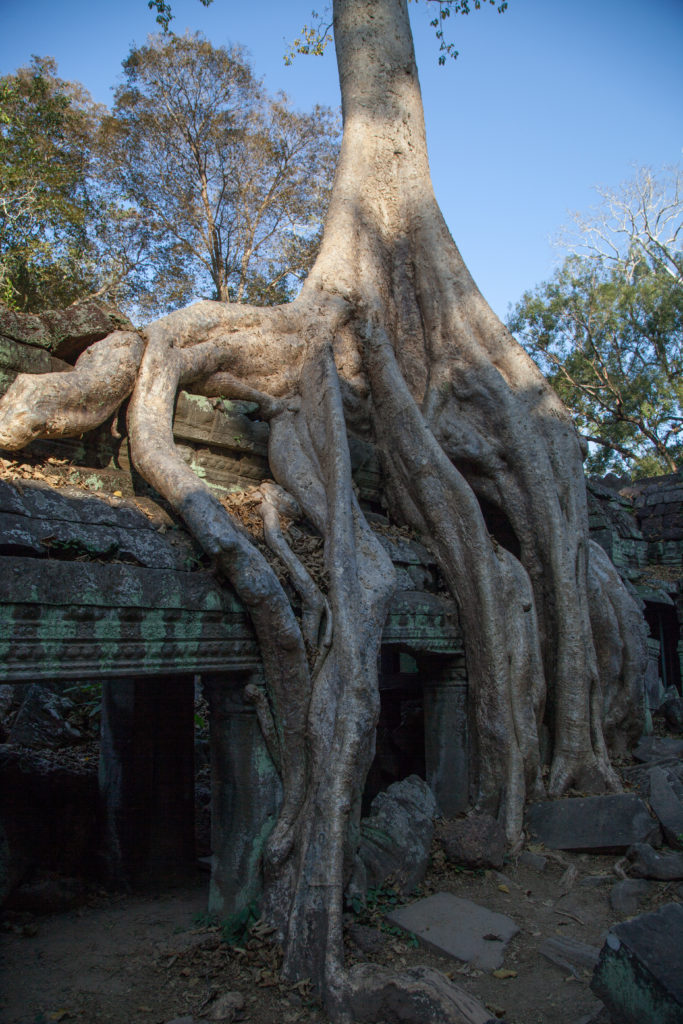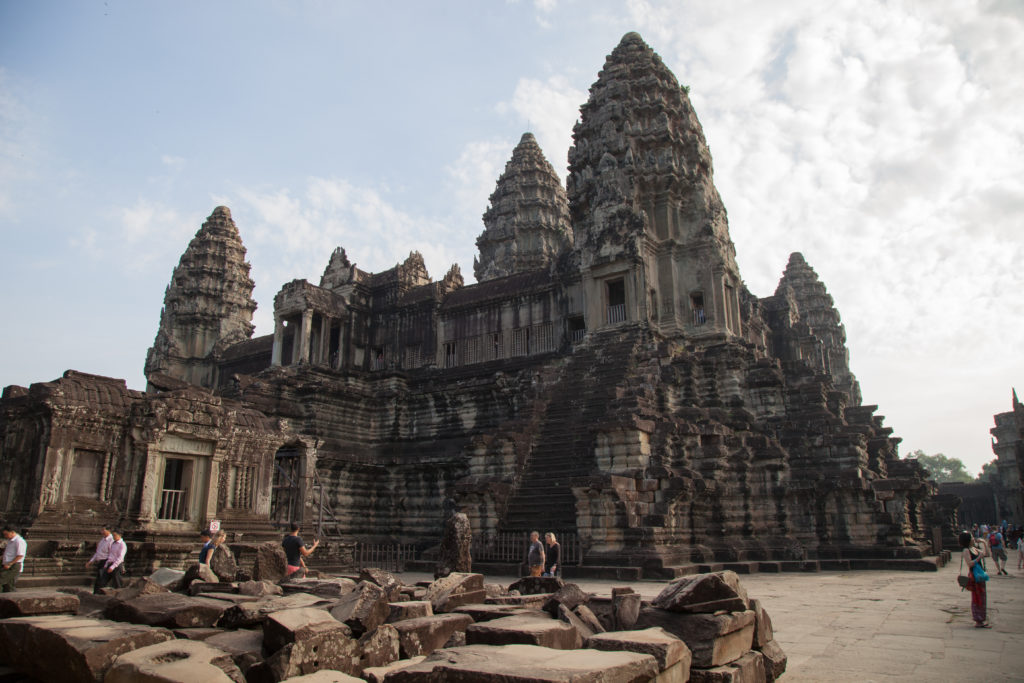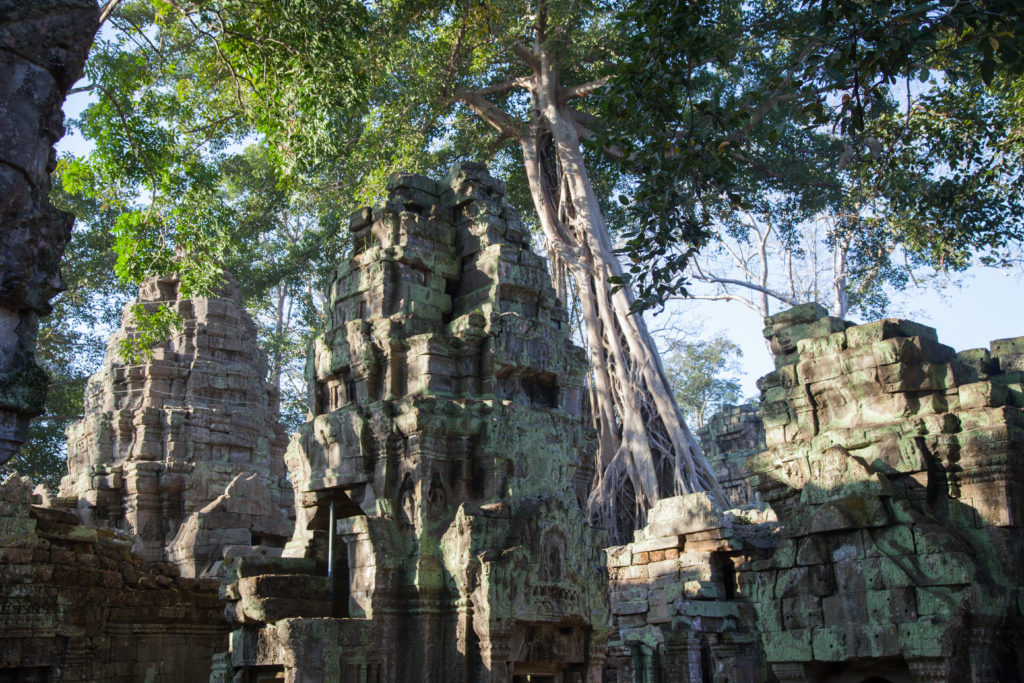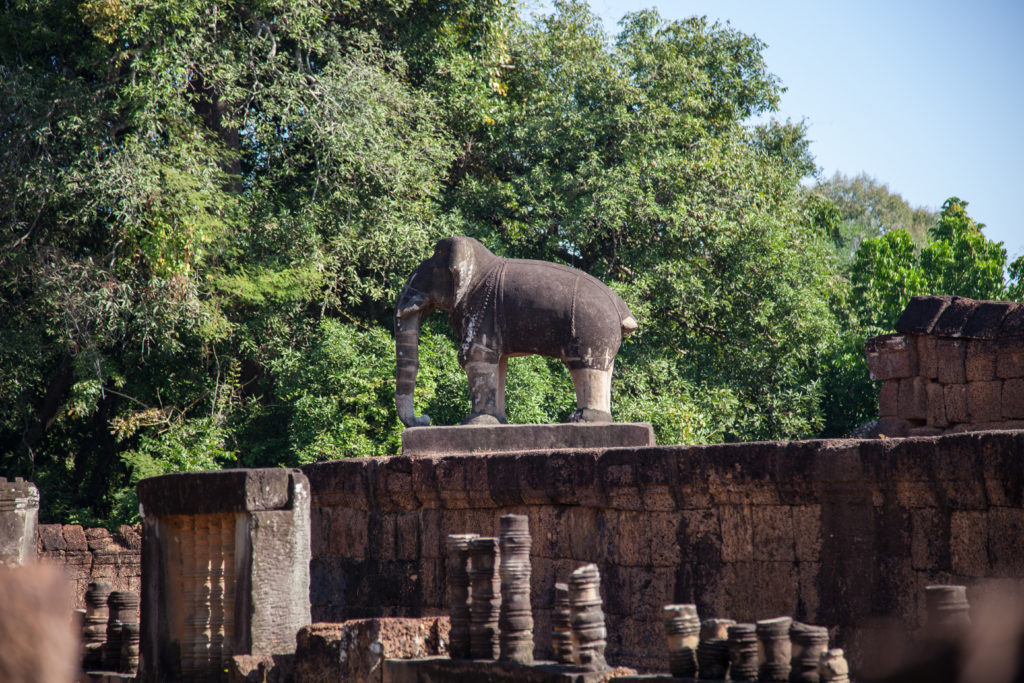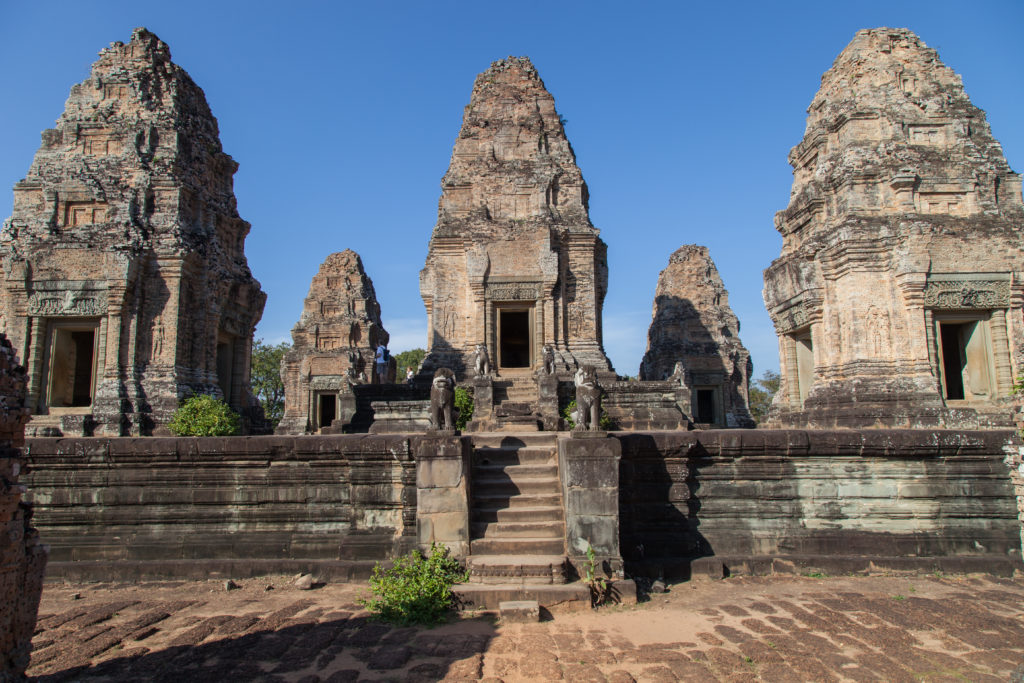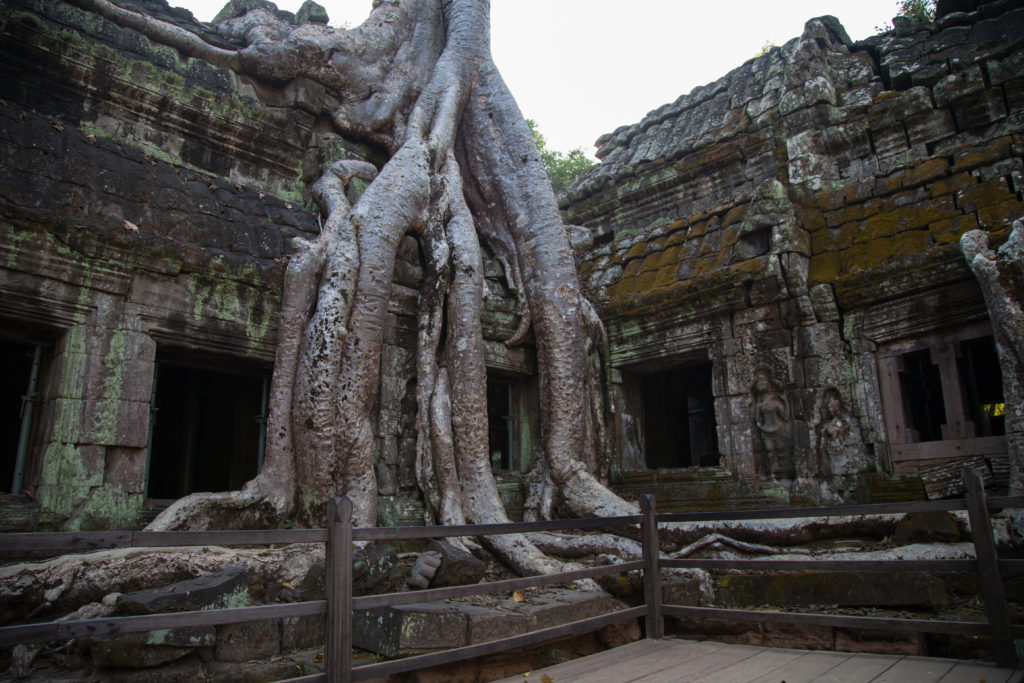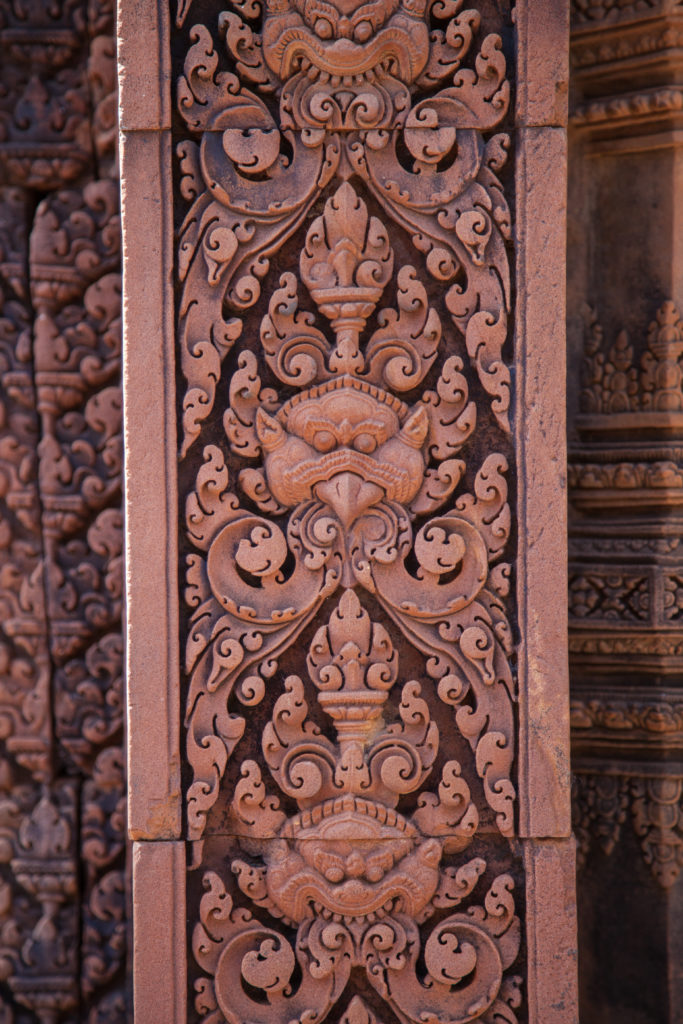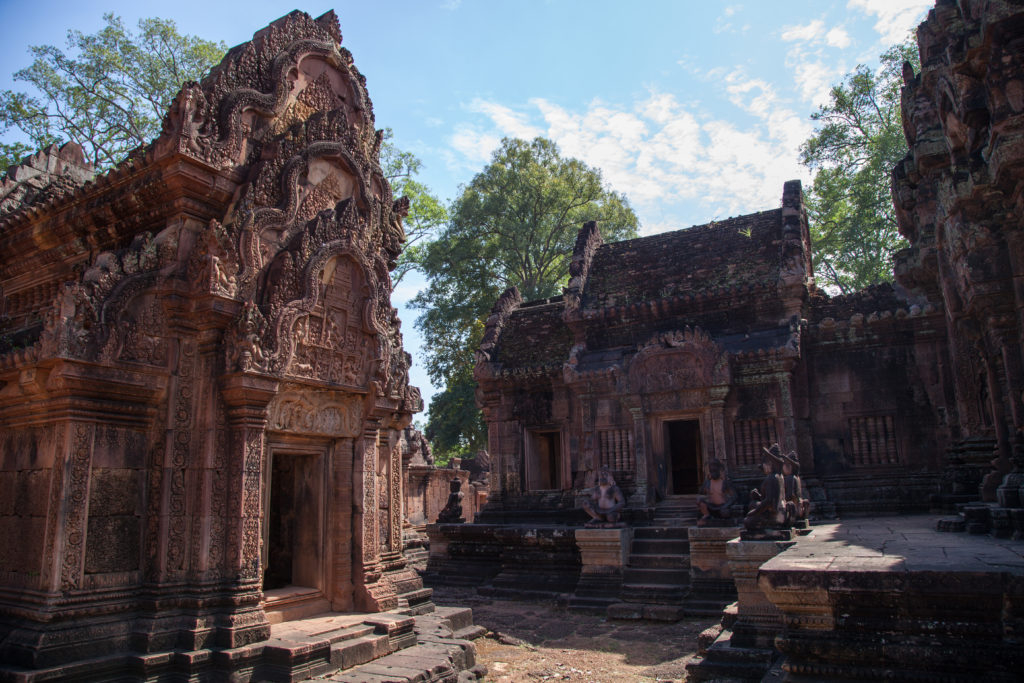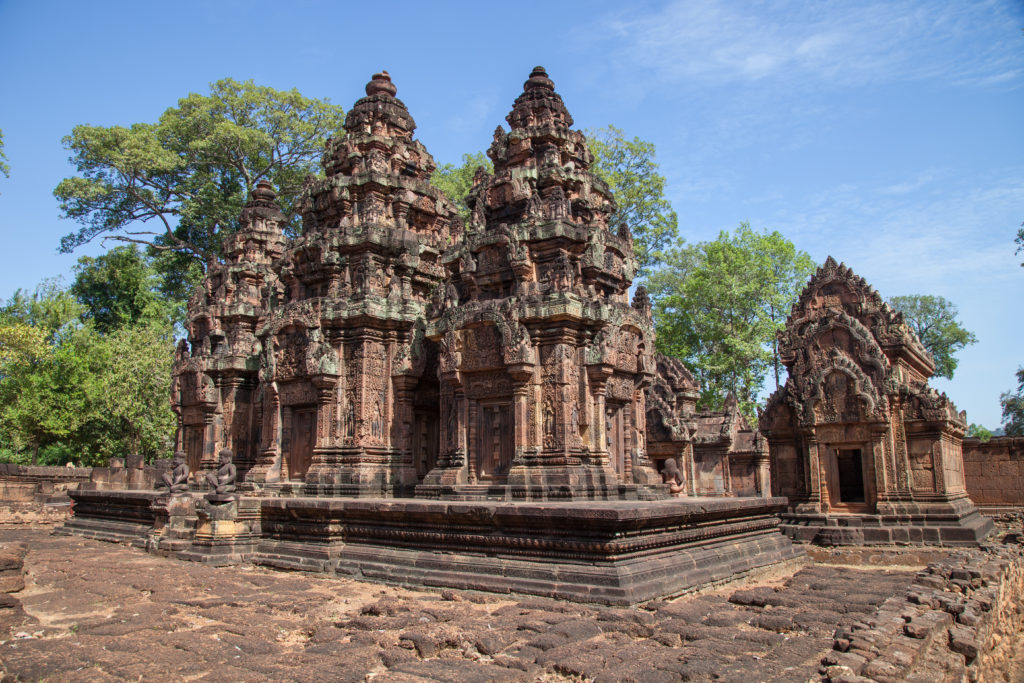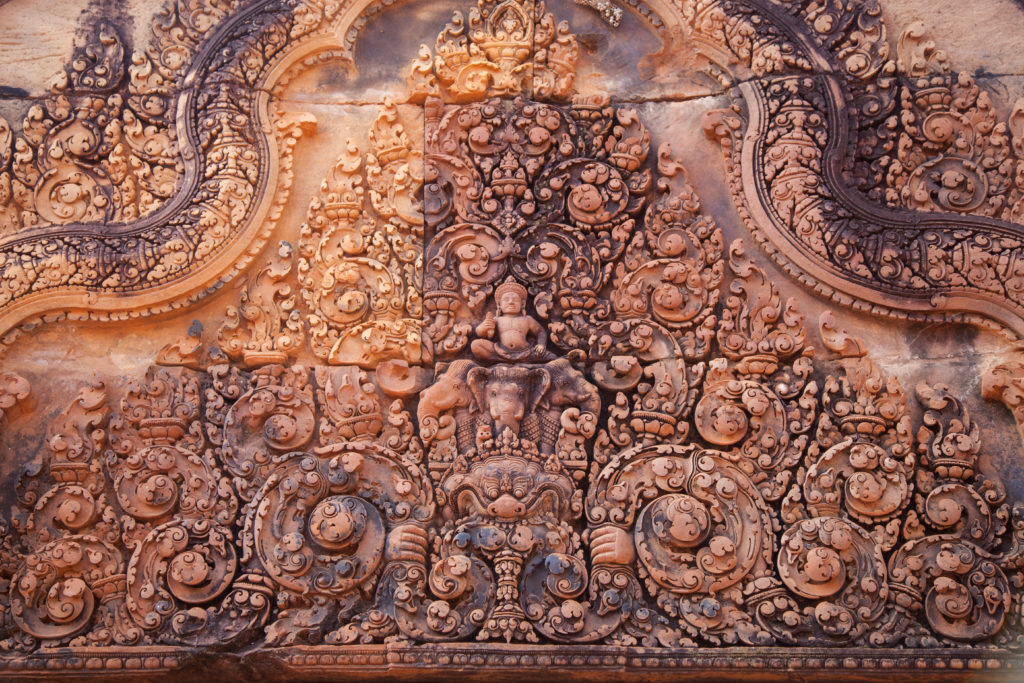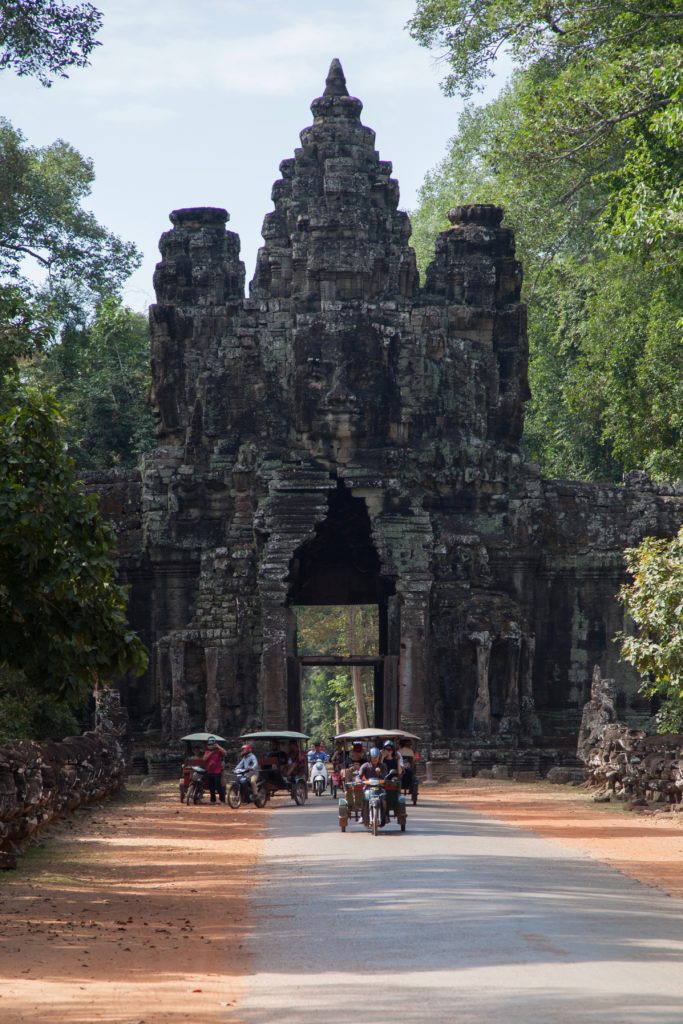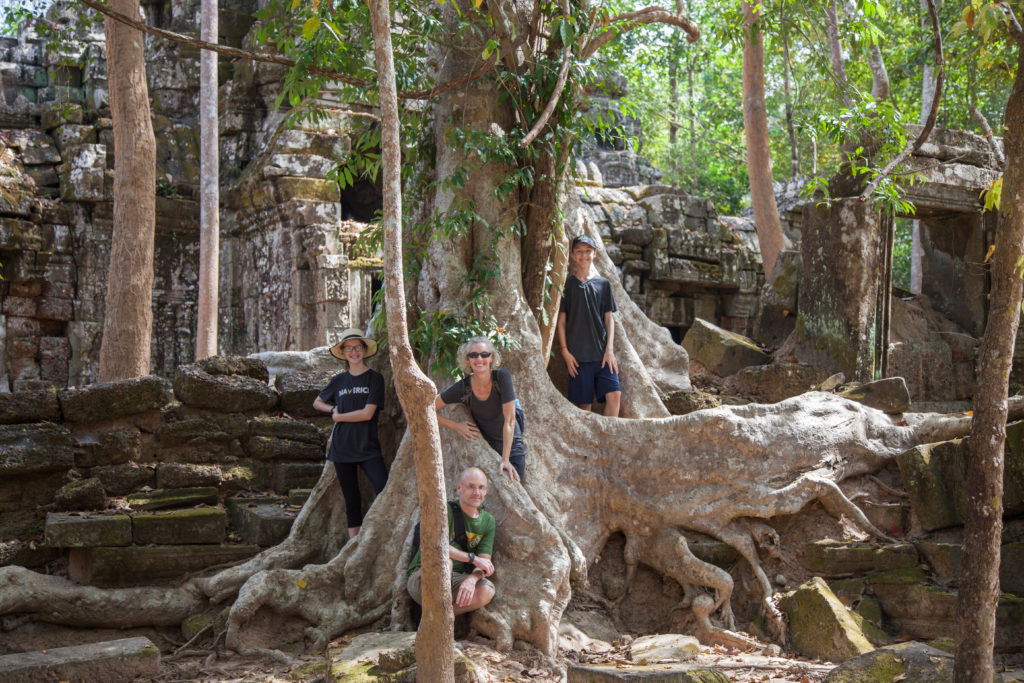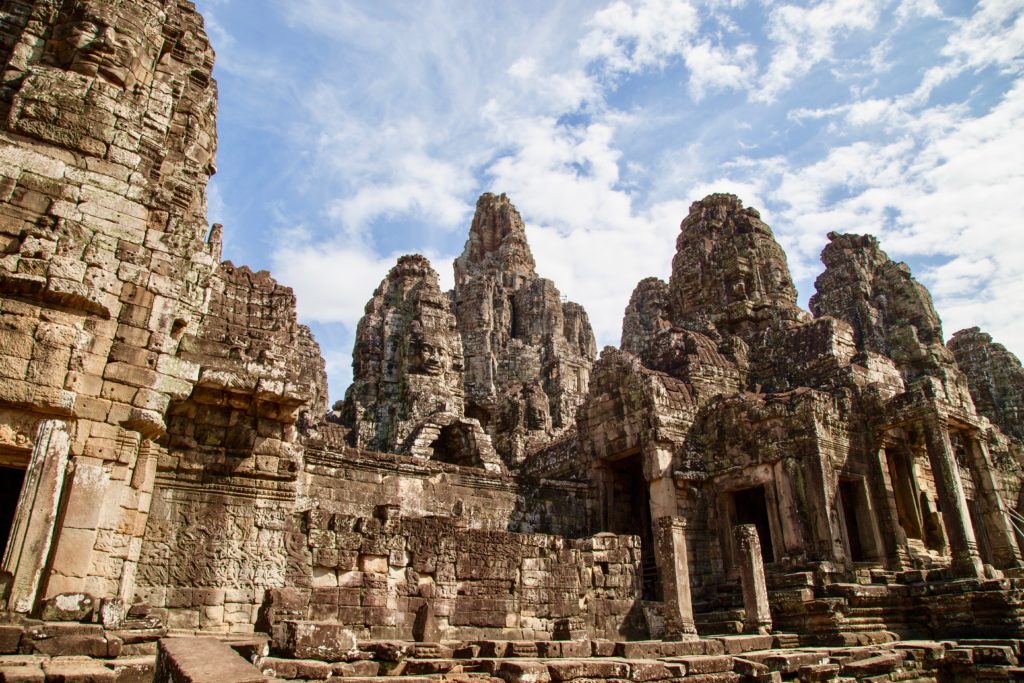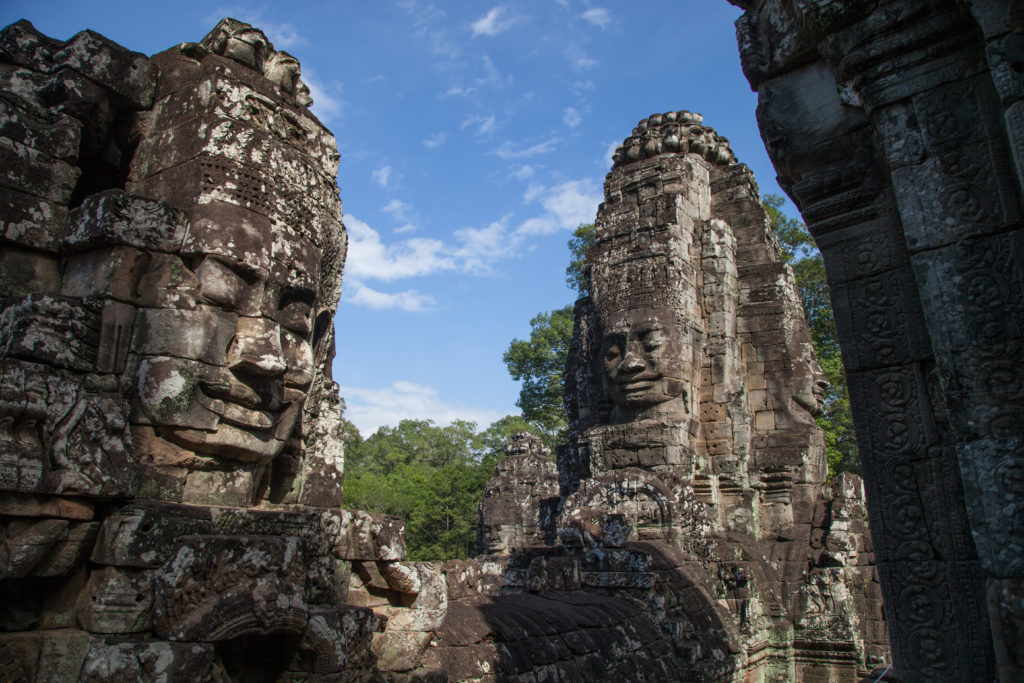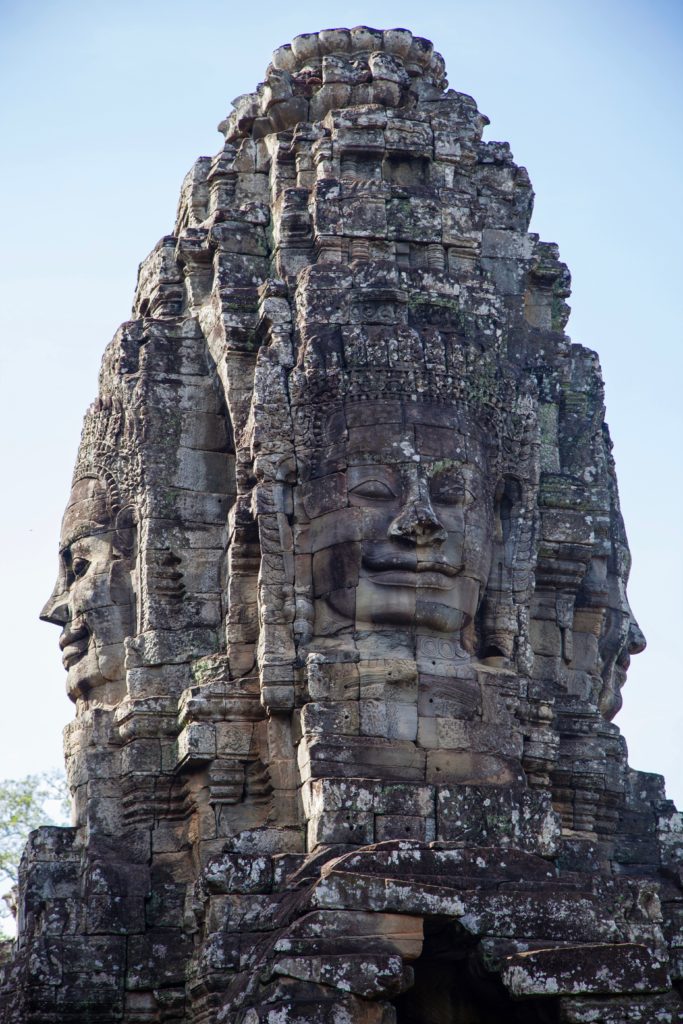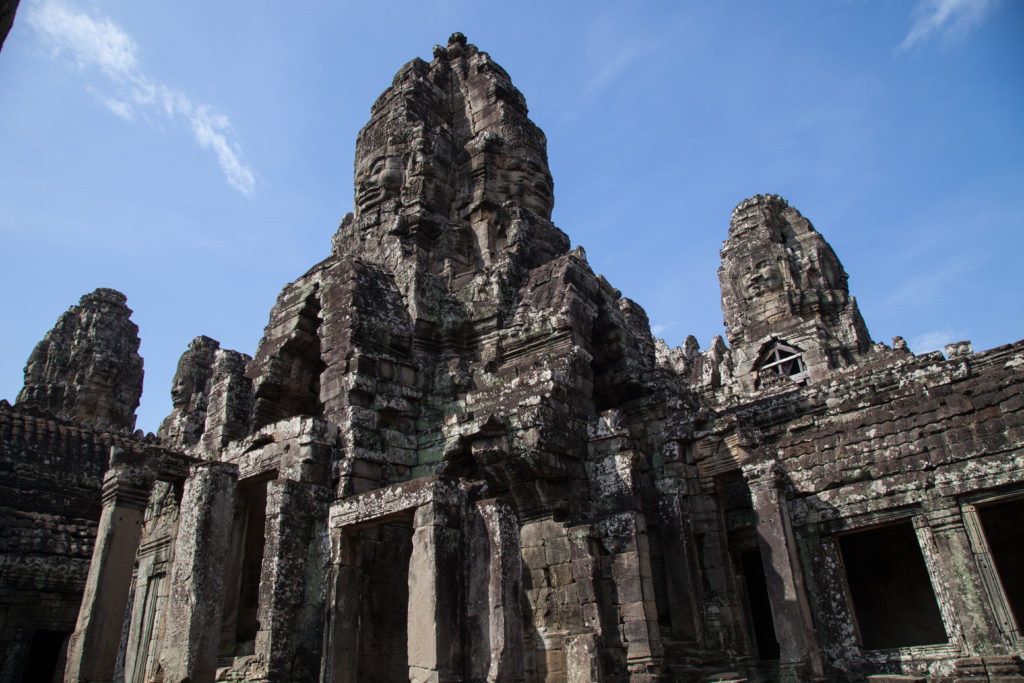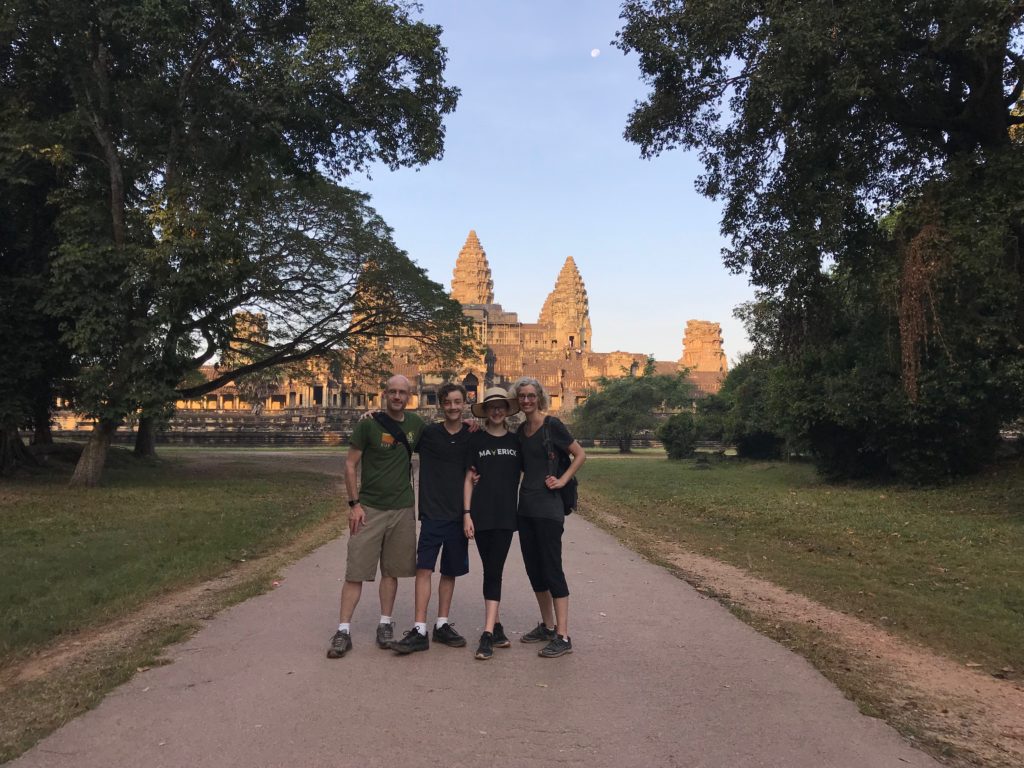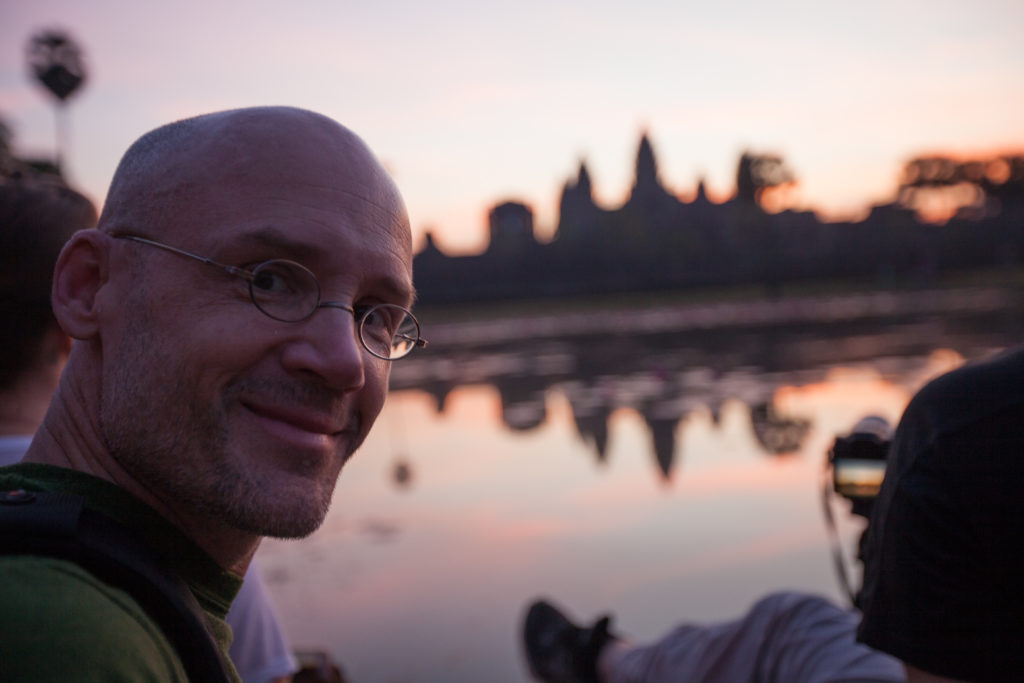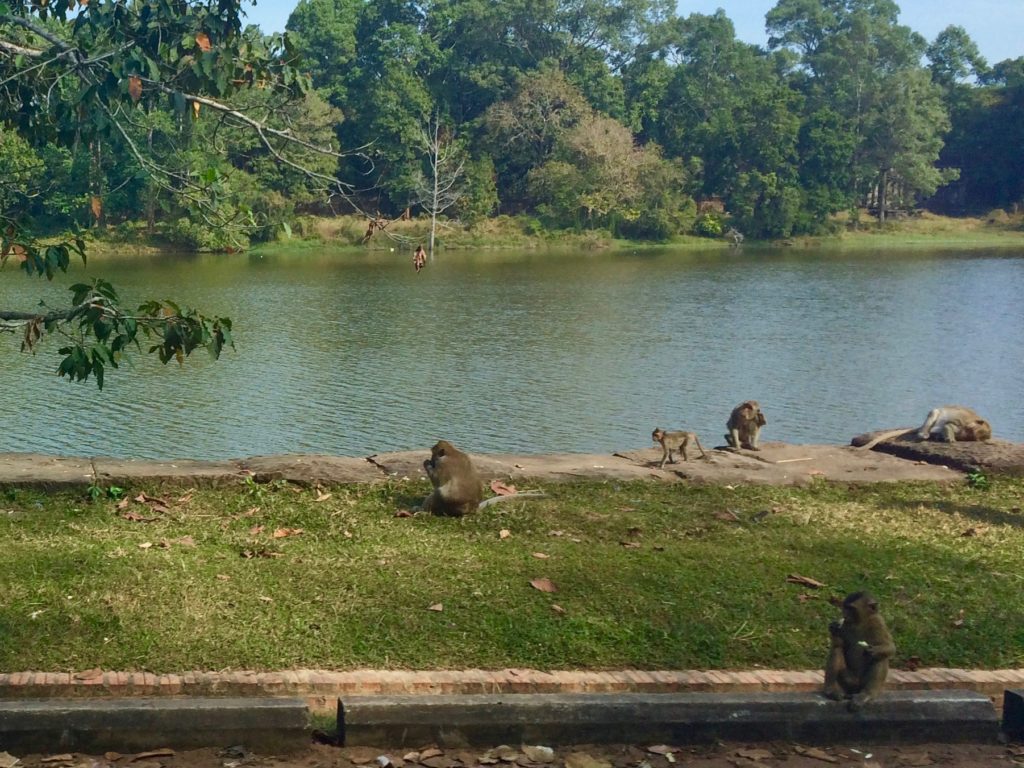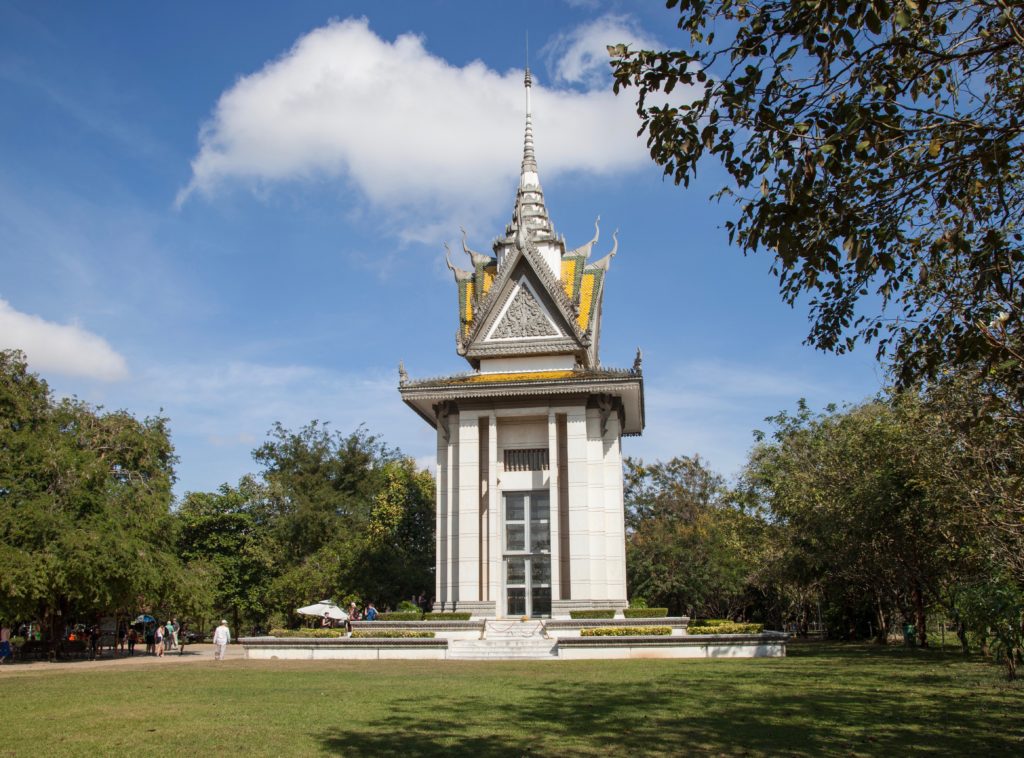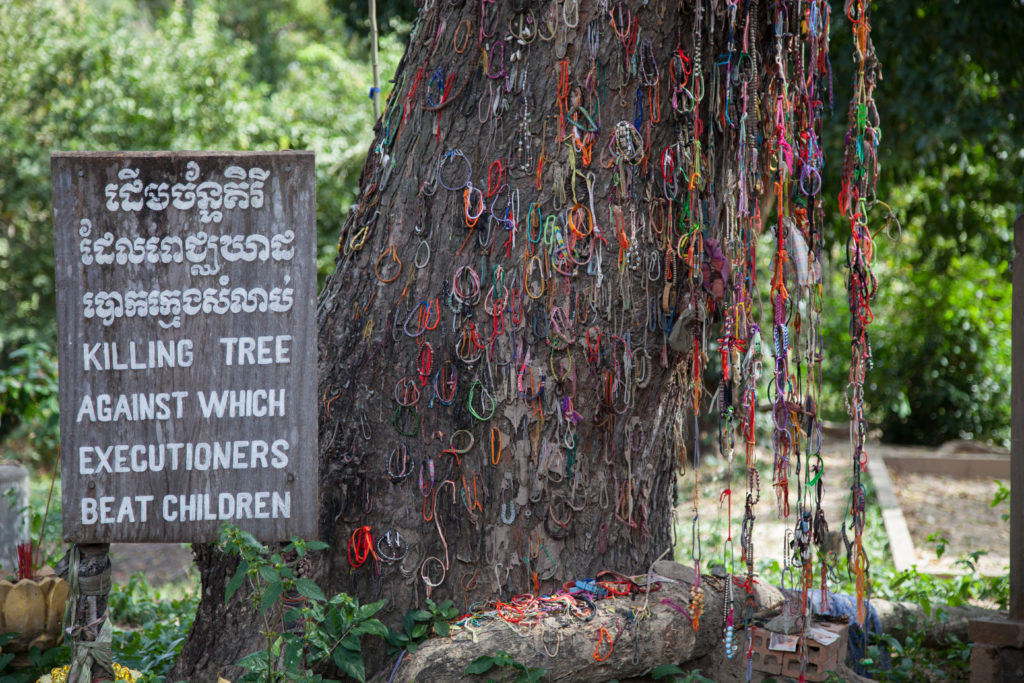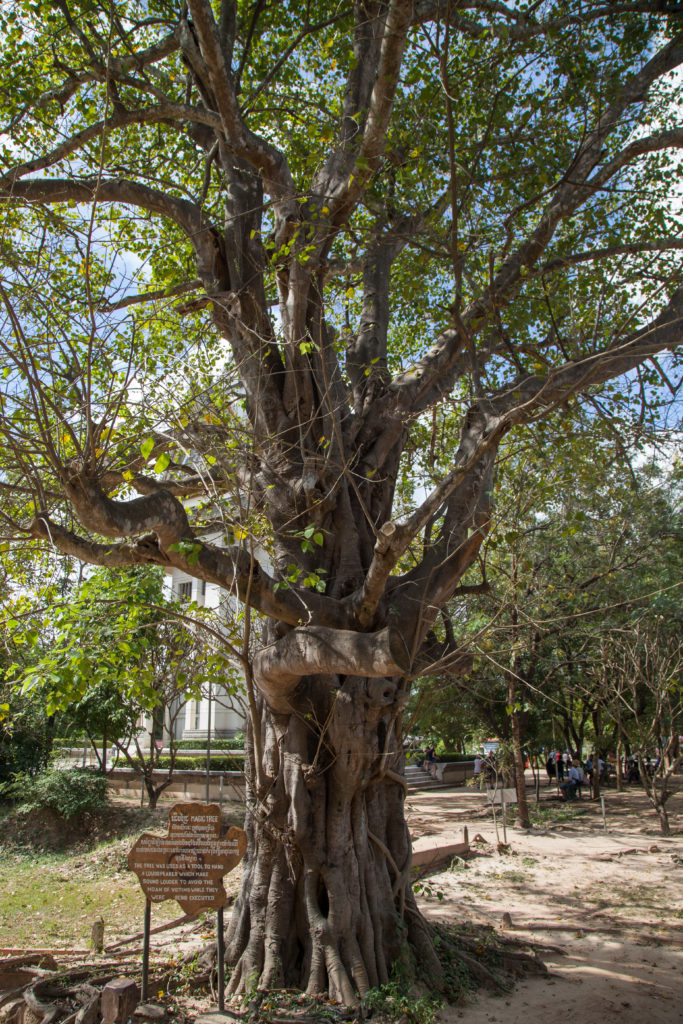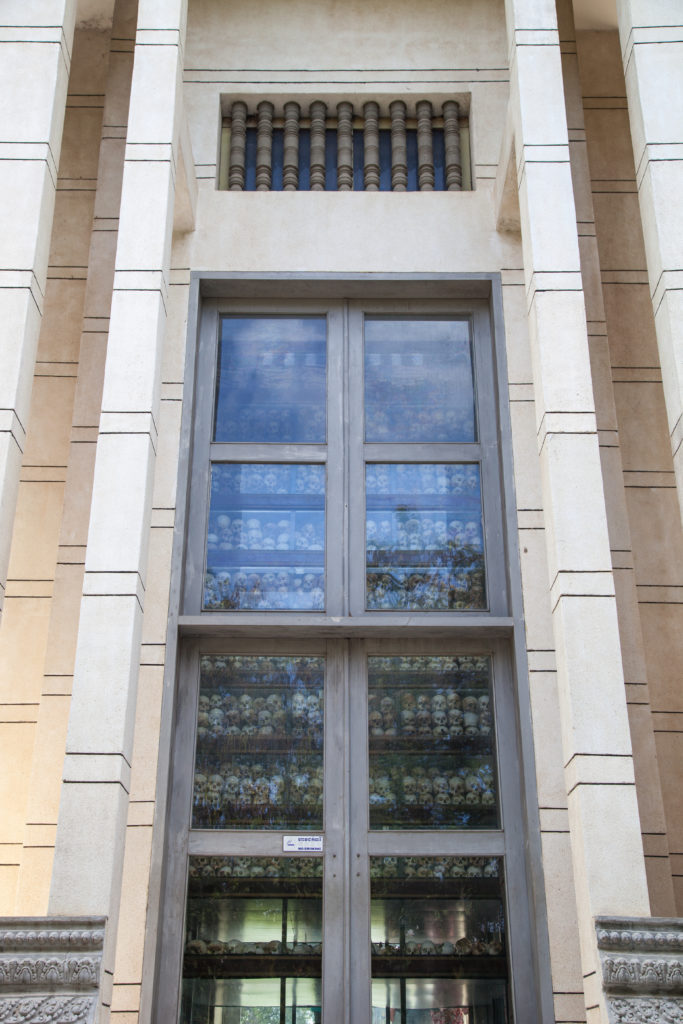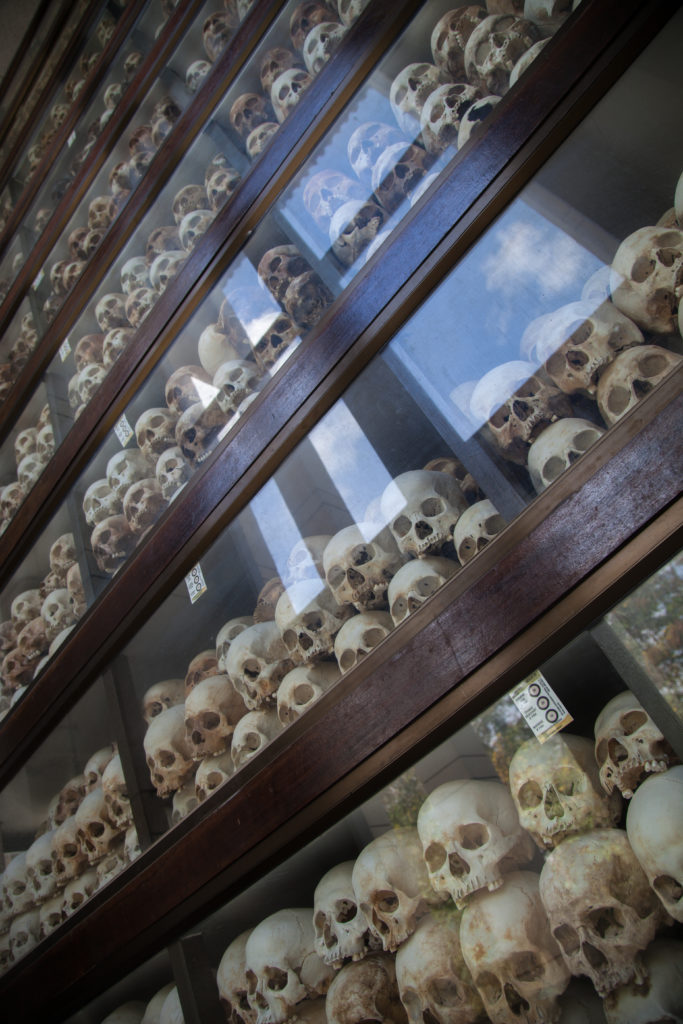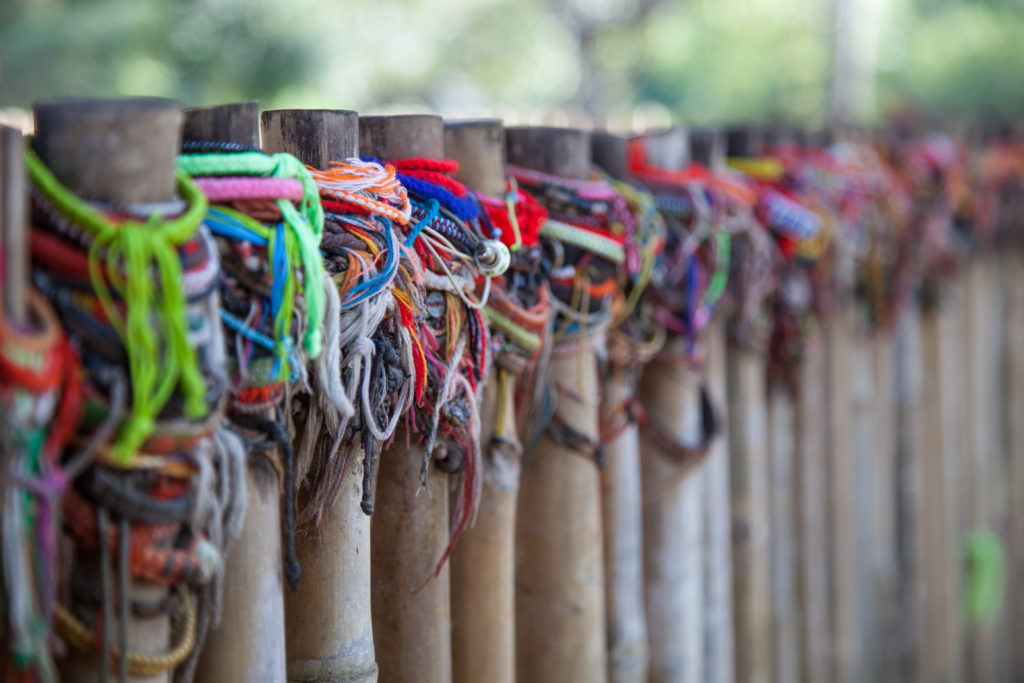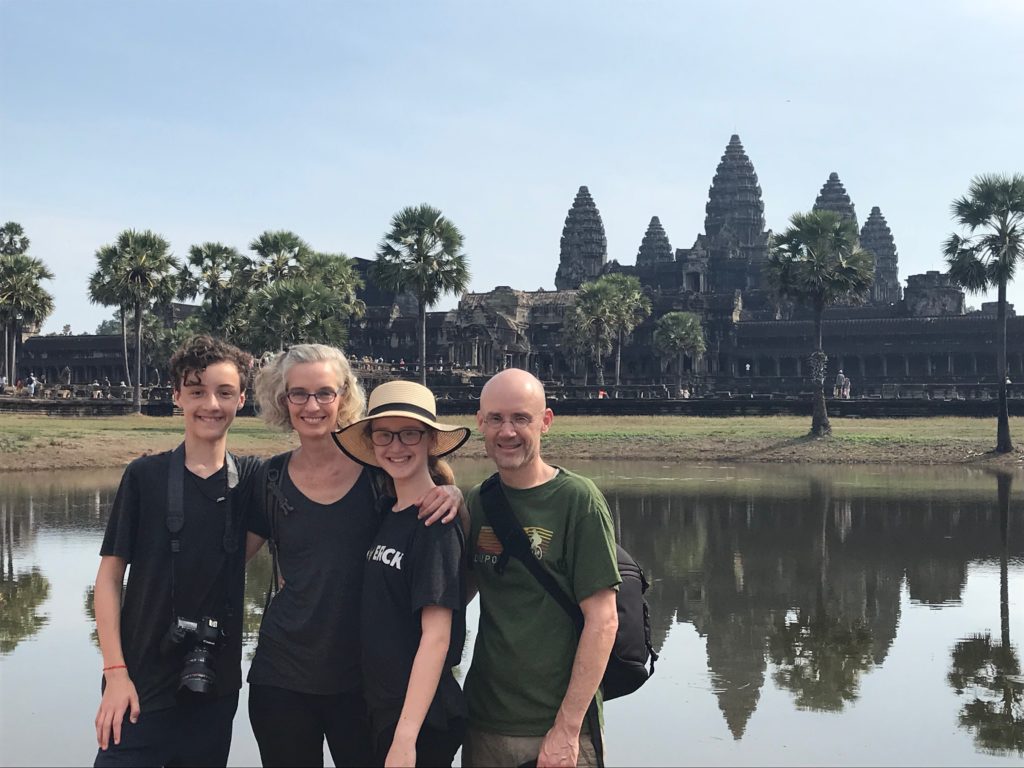
We took a side trip to Cambodia during our time in Thailand. I mainly wanted to go to Cambodia to see The Killing Fields (yes, I am that fun) but added Angkor Wat because that is what you do if you are going to Cambodia.
I had seen the sunrise photo of Angkor Wat that everyone takes (above is Matthew’s version), and frankly, I wasn’t that impressed. I was not exactly looking forward to touring lots of rocks in the heat… but I was wrong. These rocks are amazing.
We visited Angkor Wat (12th century AD) and nine other surrounding temples from the Khmer Empire built during 9th to 12th century AD.
A Buddhist monk puts a bracelet on Ethan after blessing him at Angkor Wat.
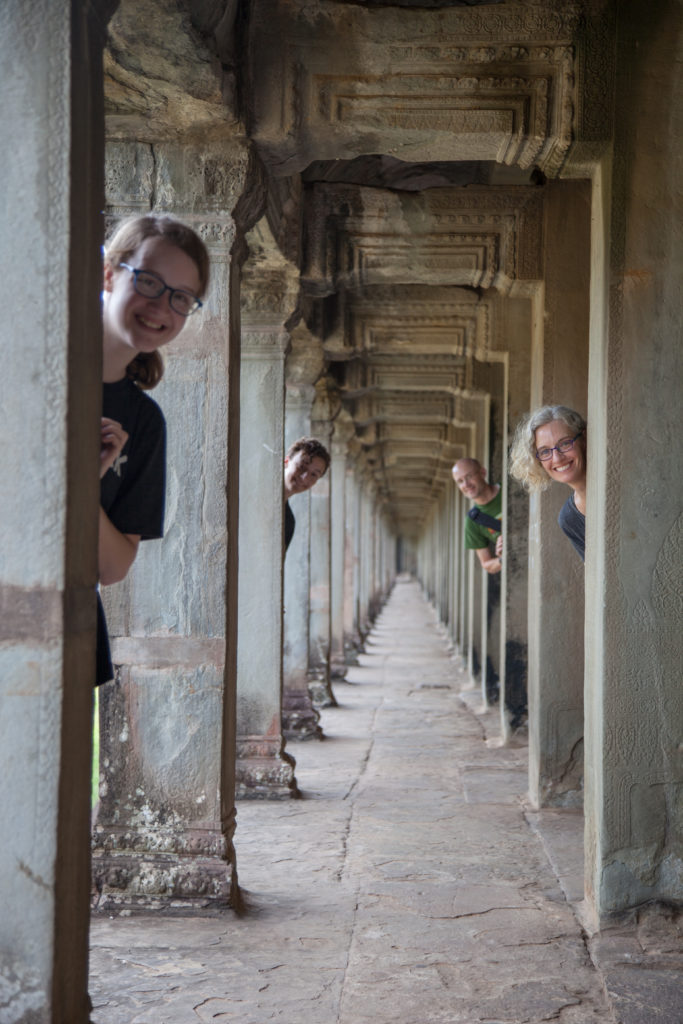
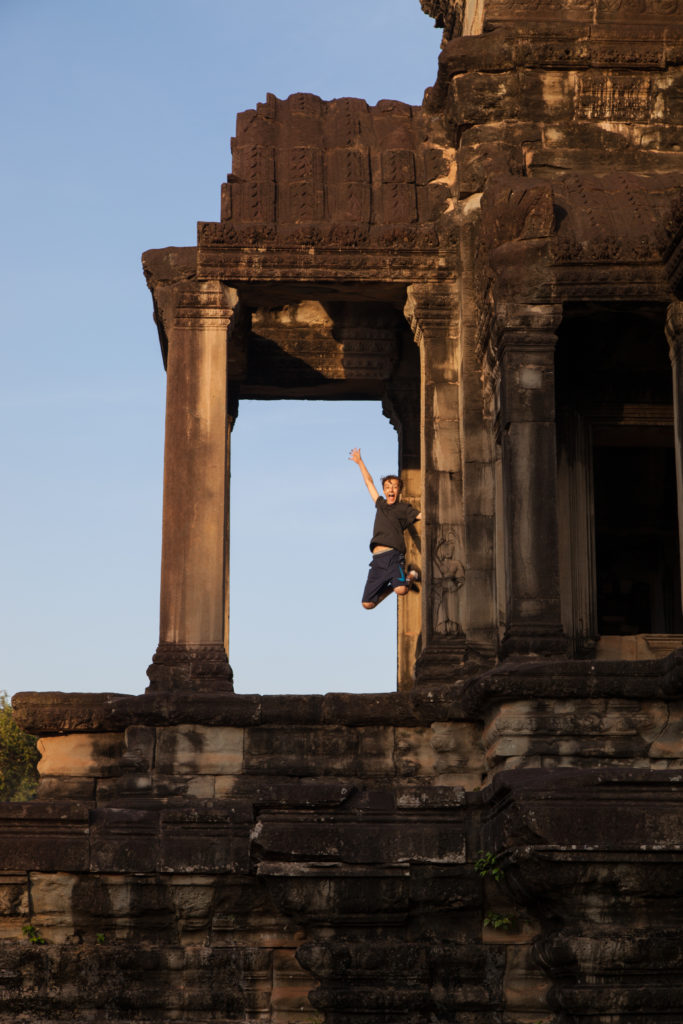
The temples had intact, intricate Hindu and Buddhist carvings. The religion changed with the ruler, so many ruins had elements of both. Our private tour guide told us the stories depicted in the carvings. I would have preferred to hear more about the architecture, so I was surprised at the end of the day to learn Logan loved the stories. Perhaps it is because her ‘very interested’ and ‘almost asleep’ face is oddly similar.
We visited ten sites in two days. If I had written this post the week after our visit, I probably would have grouped the photos and correctly labeled each. But a lot of time has passed, and we are now in China (relevant because the internet is slow and I don’t remember which name goes with which photo anymore). So… here are some photos.
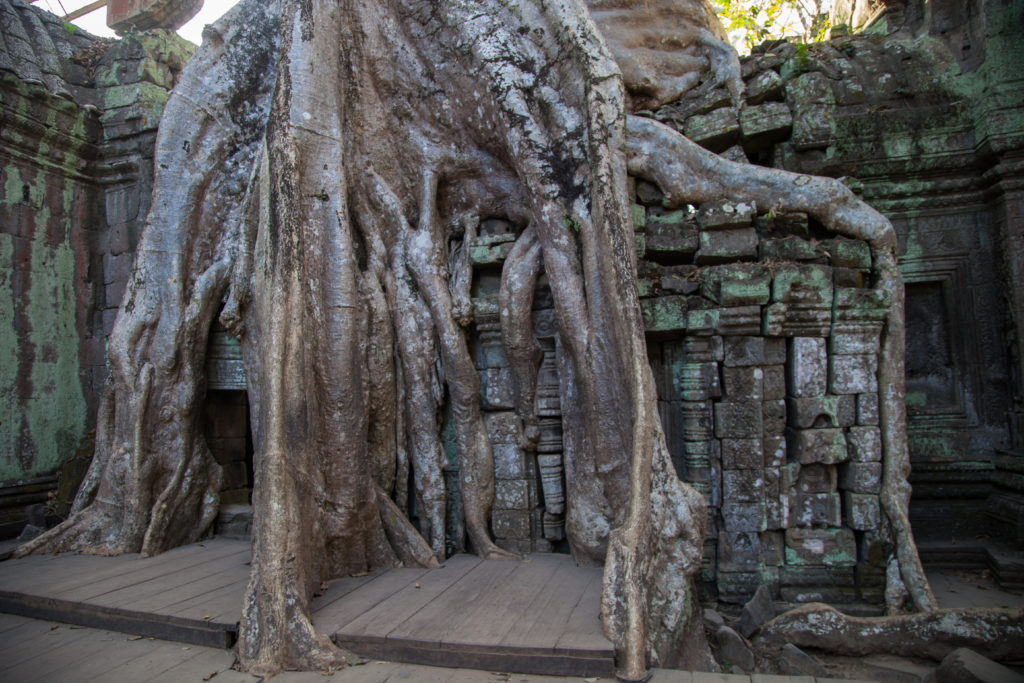
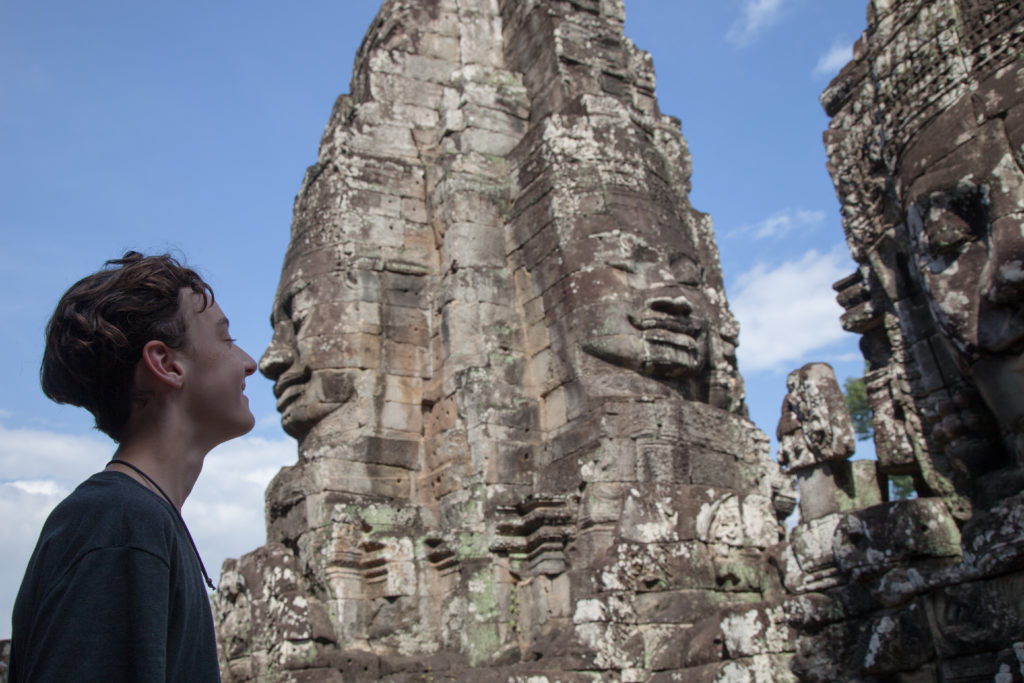
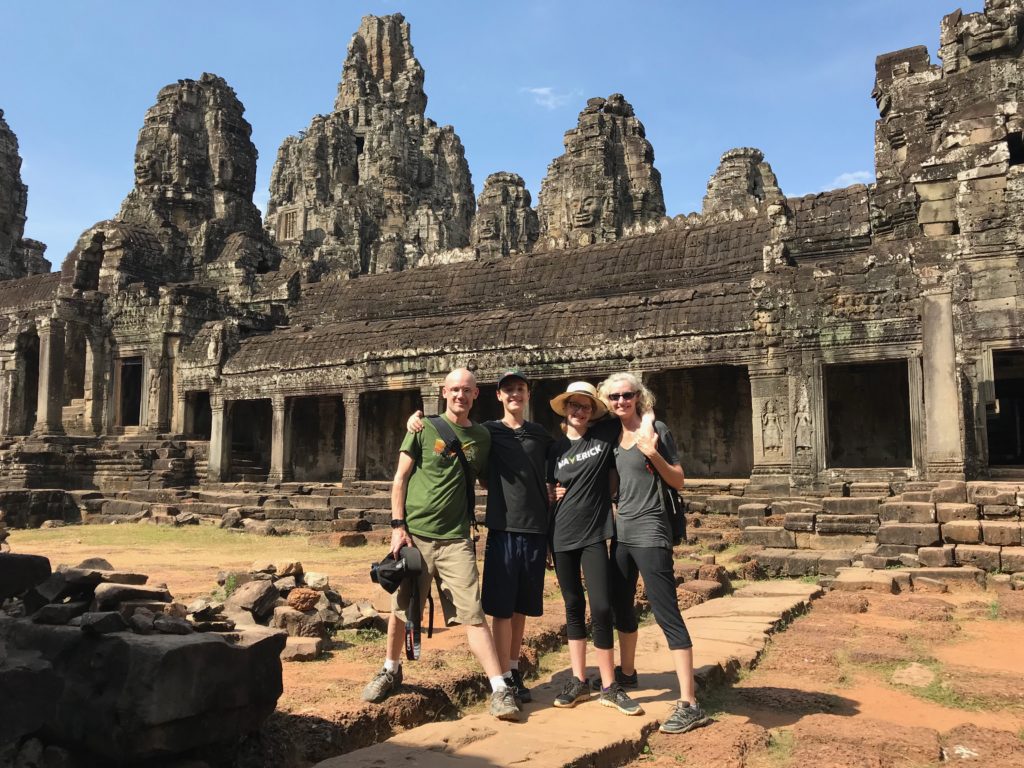
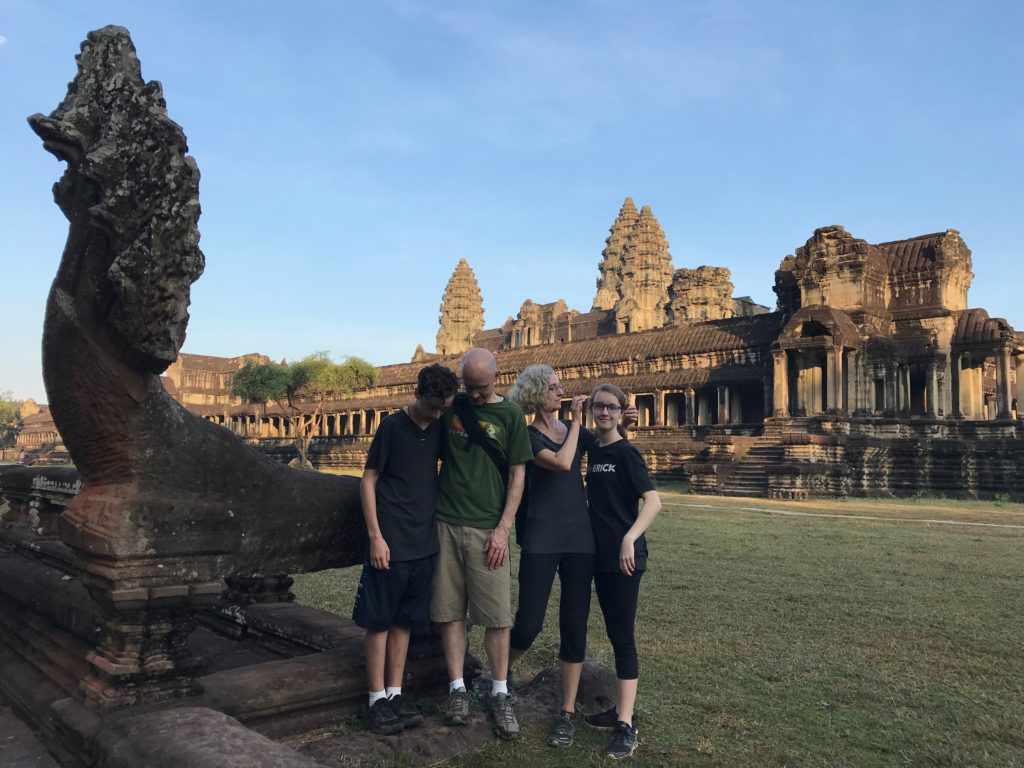
The photos were all taken at one of the sites below.
Day One:
- Ta Prohm (where parts of Tomb Raider were filmed)
- East Mebon
- Banteay Srey Temple
- Preah Khan
- Neak Pean
- Angkor Wat to watch the sunrise and also tour the site
- Prasat Kravan
- Pre Roup
- Ta Nei, not restored and still in the jungle – one of my favorites
- Angkor Thom
- Bayon
- Baphuon (lots of steep steps in the late day heat)
- Phimeanakas
- Terrace of the Leper King
